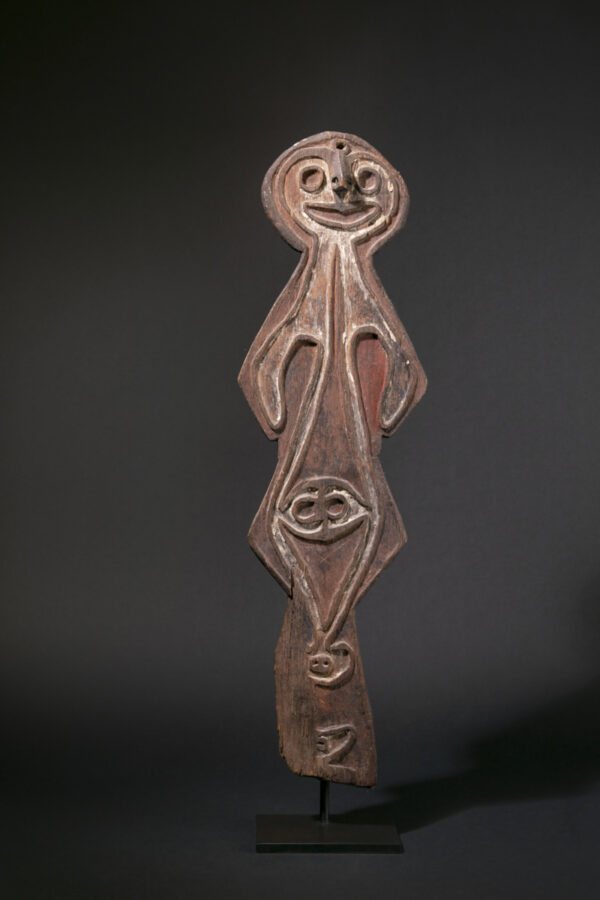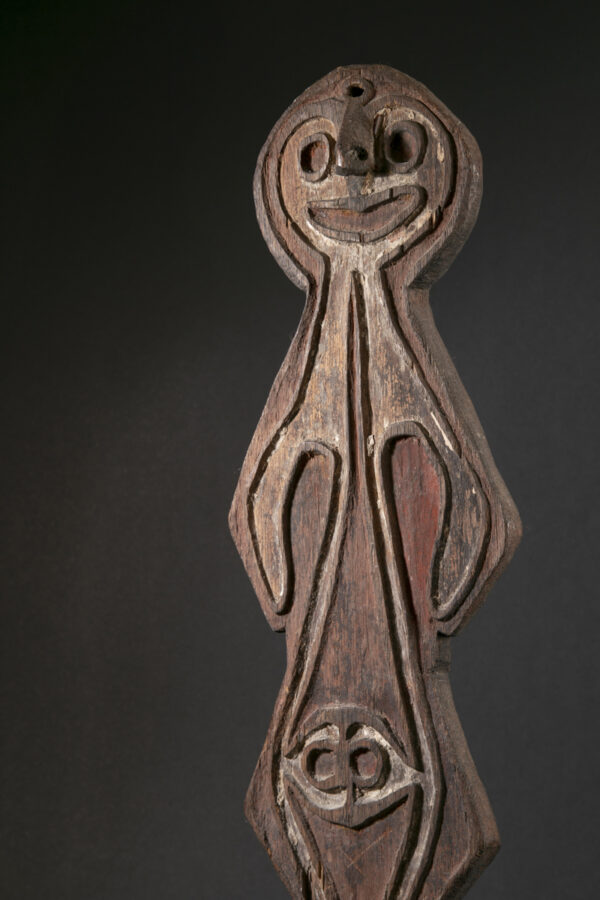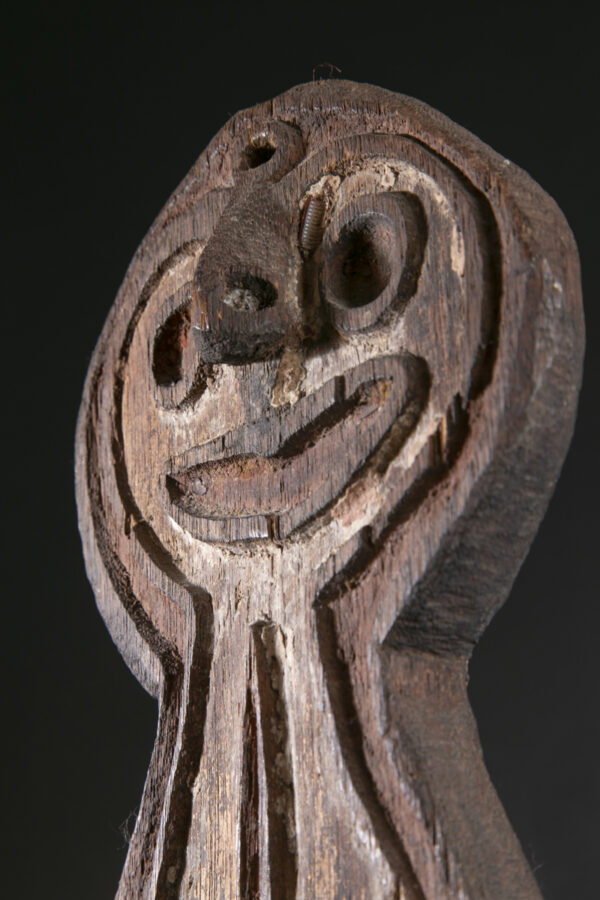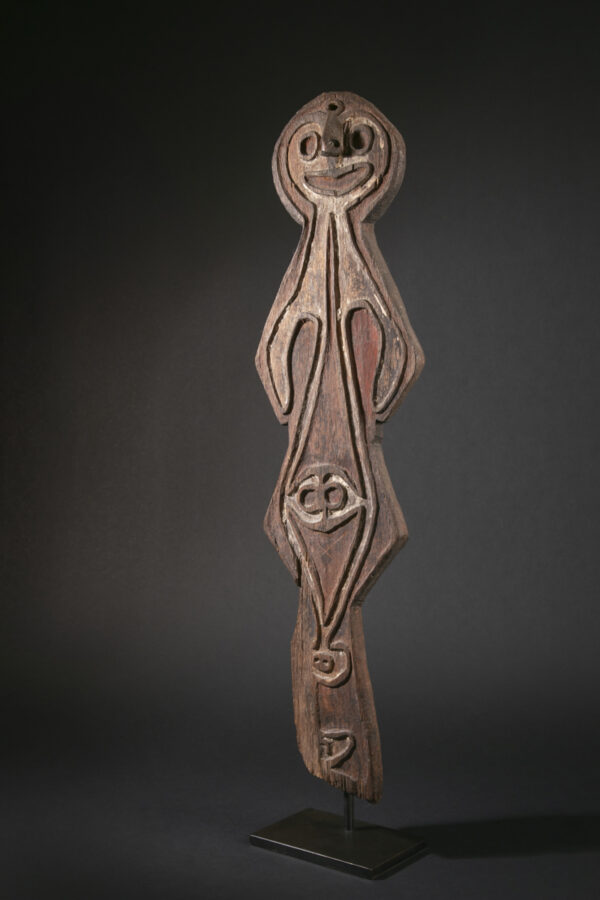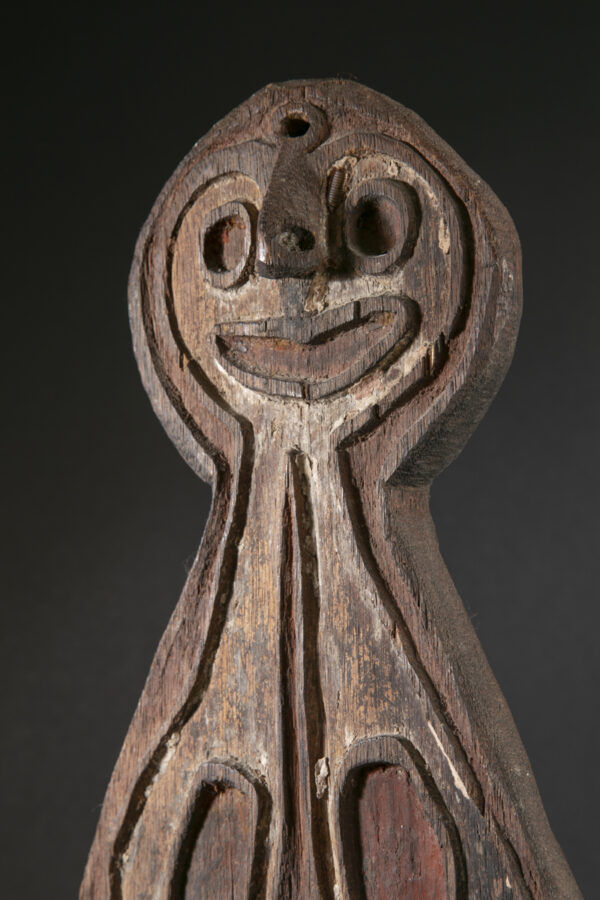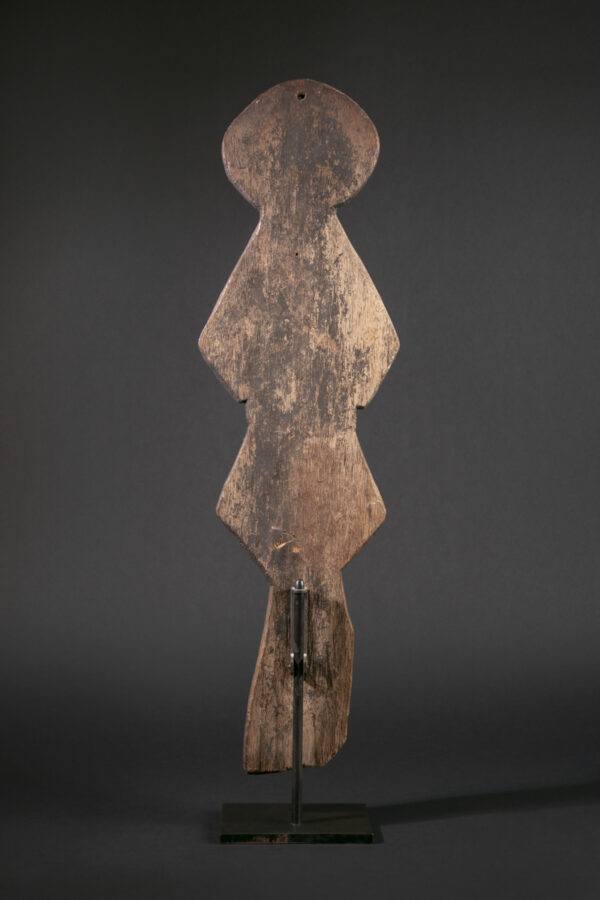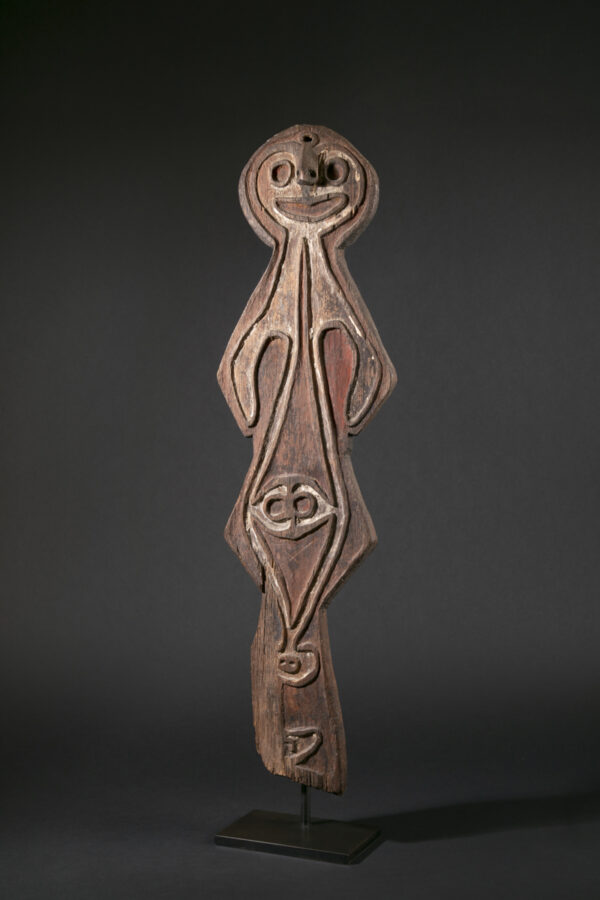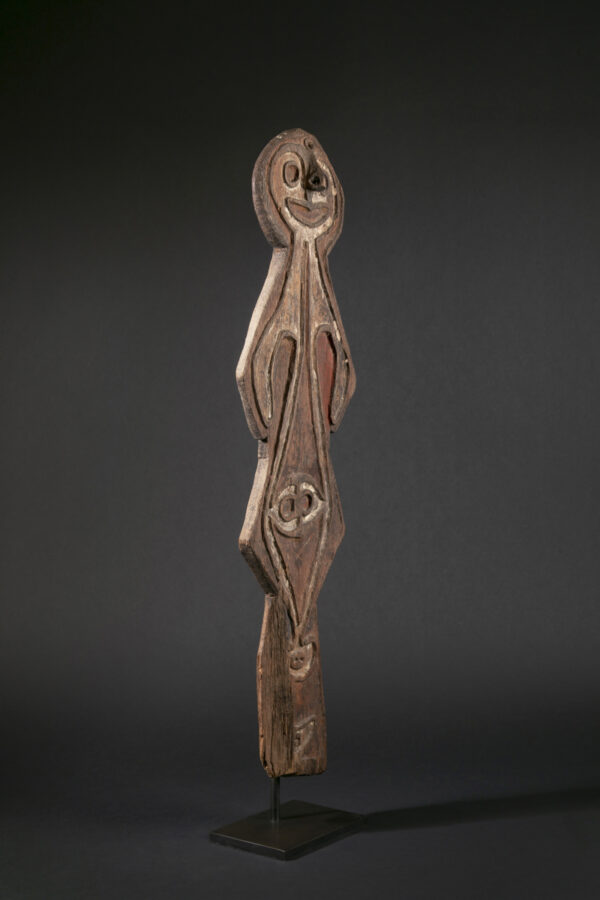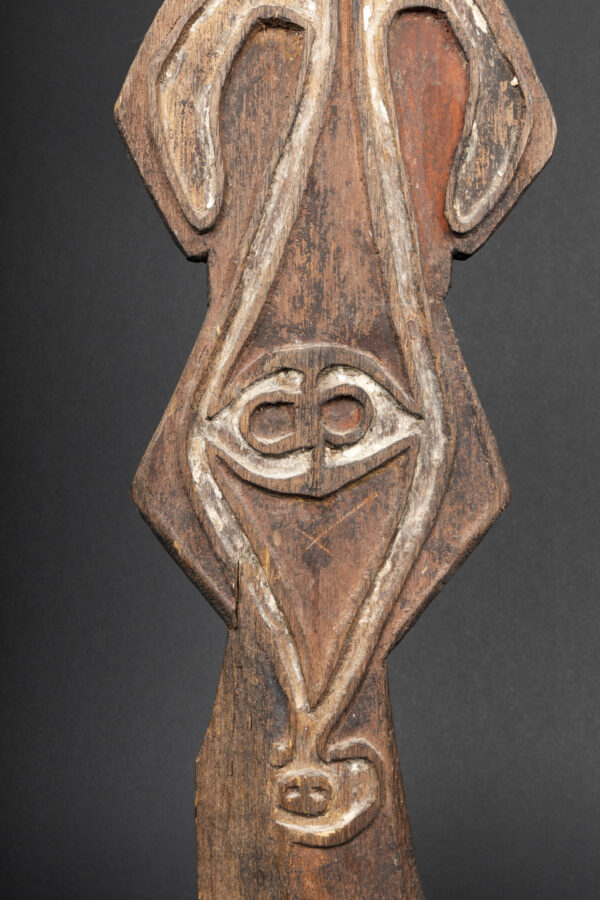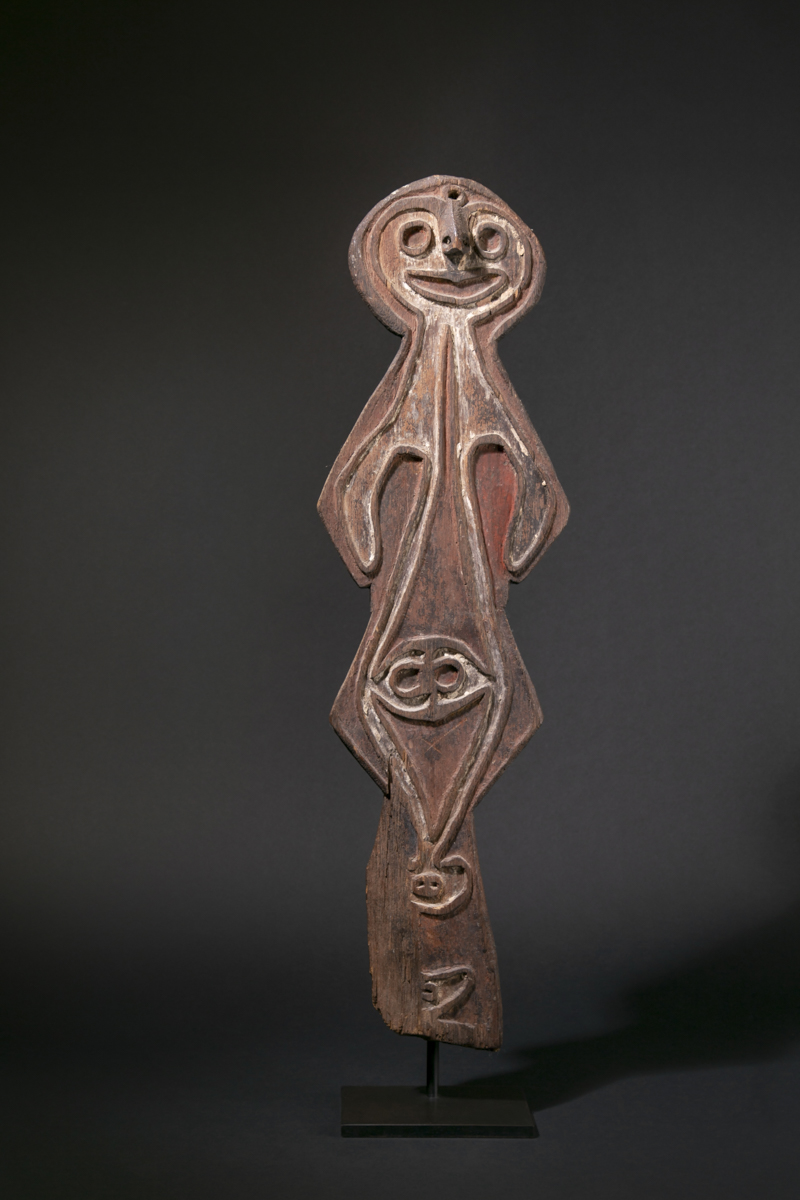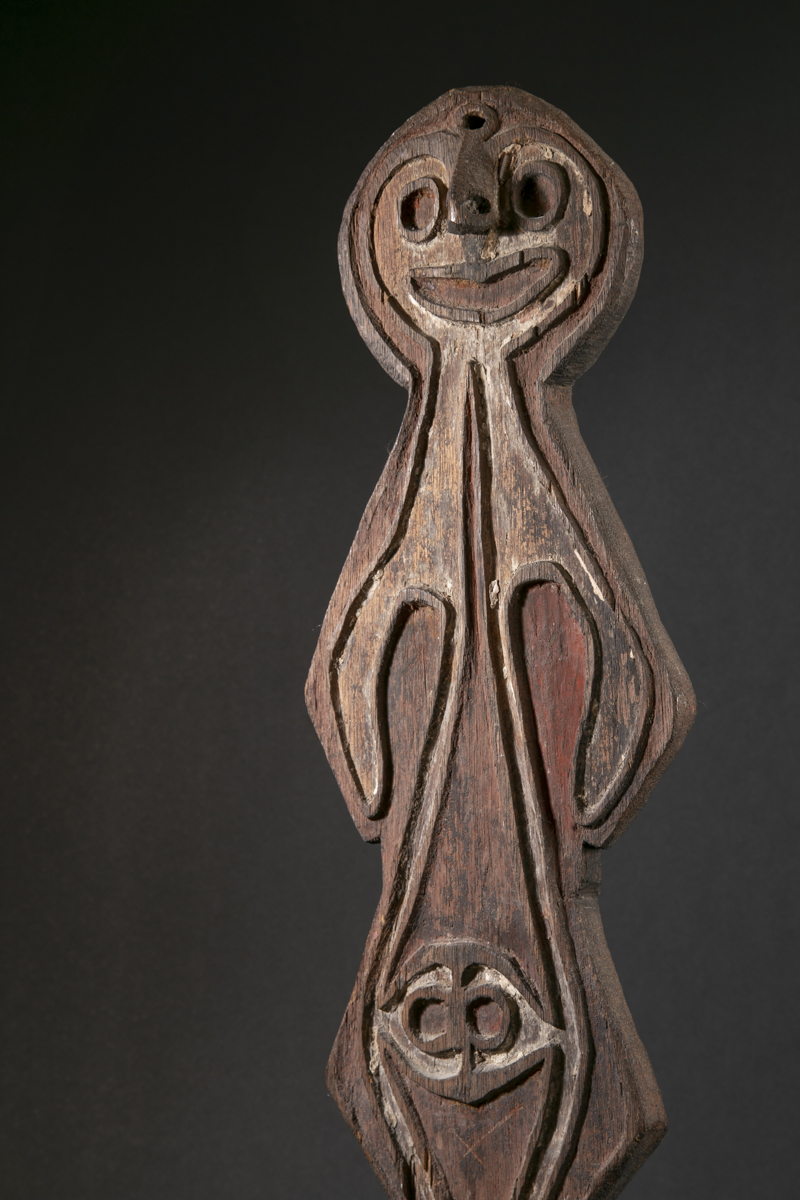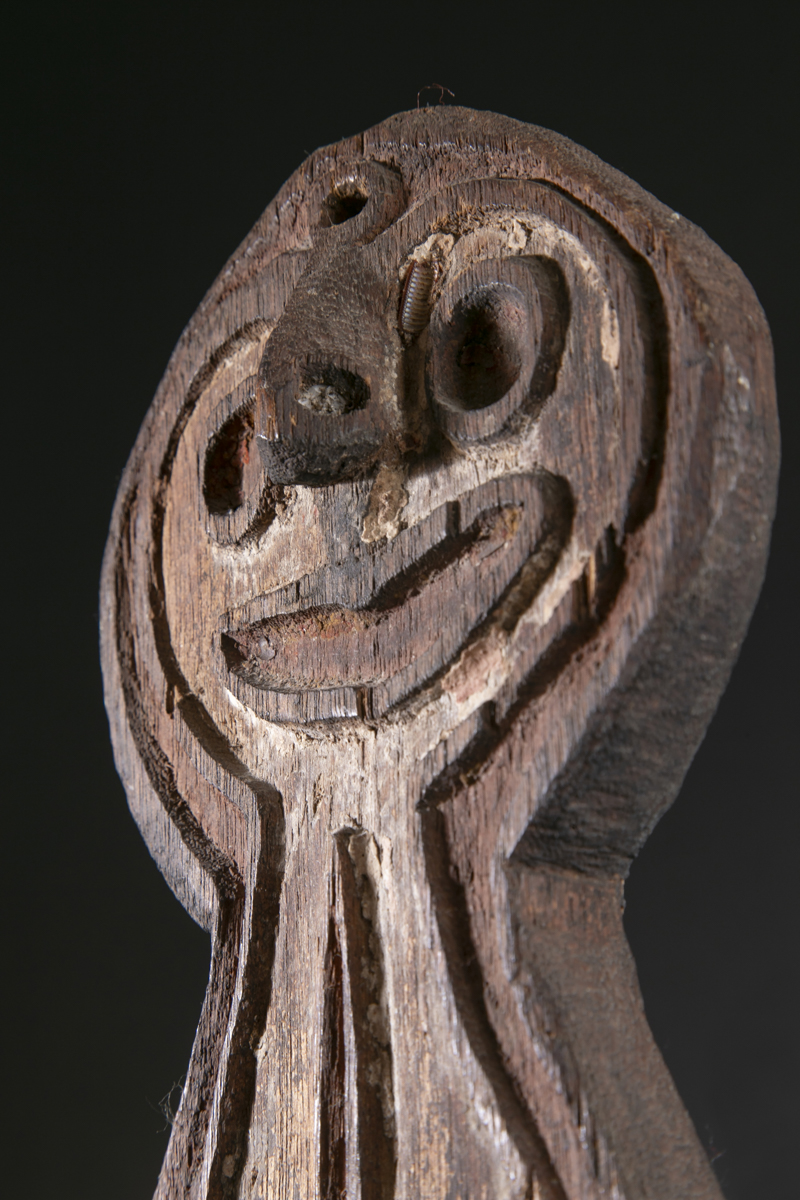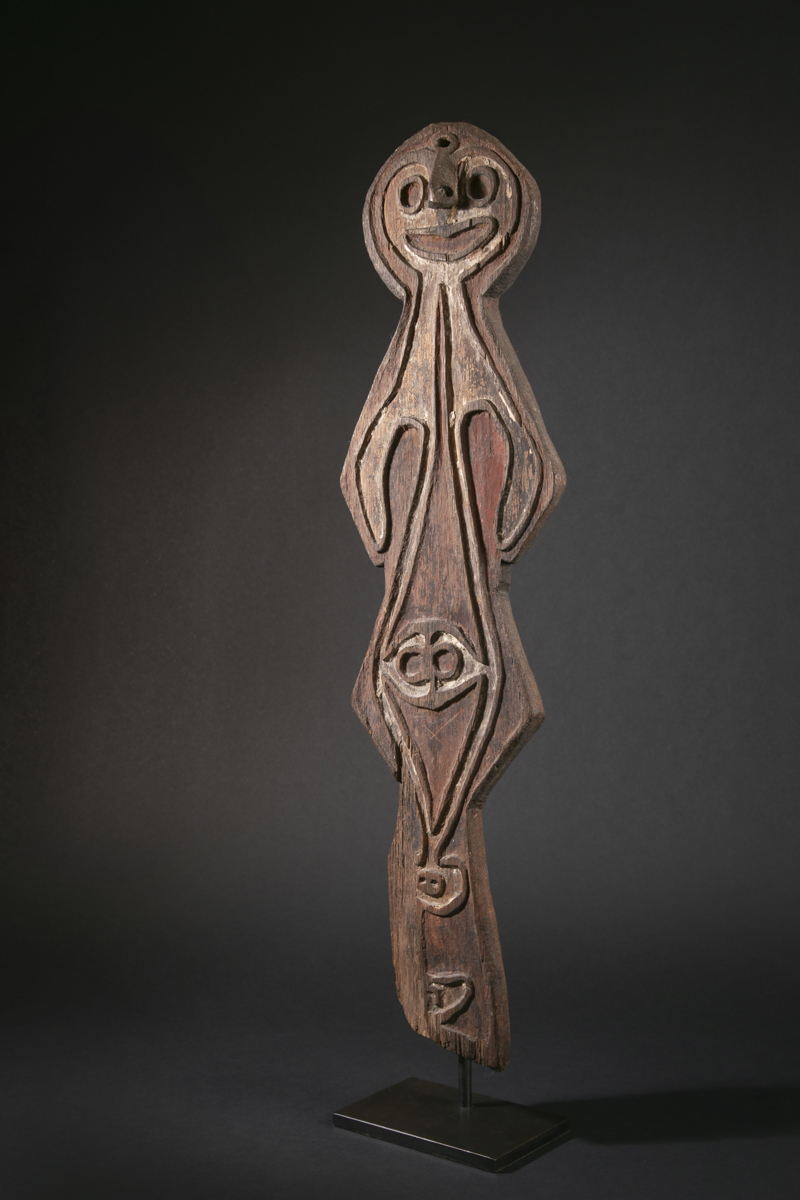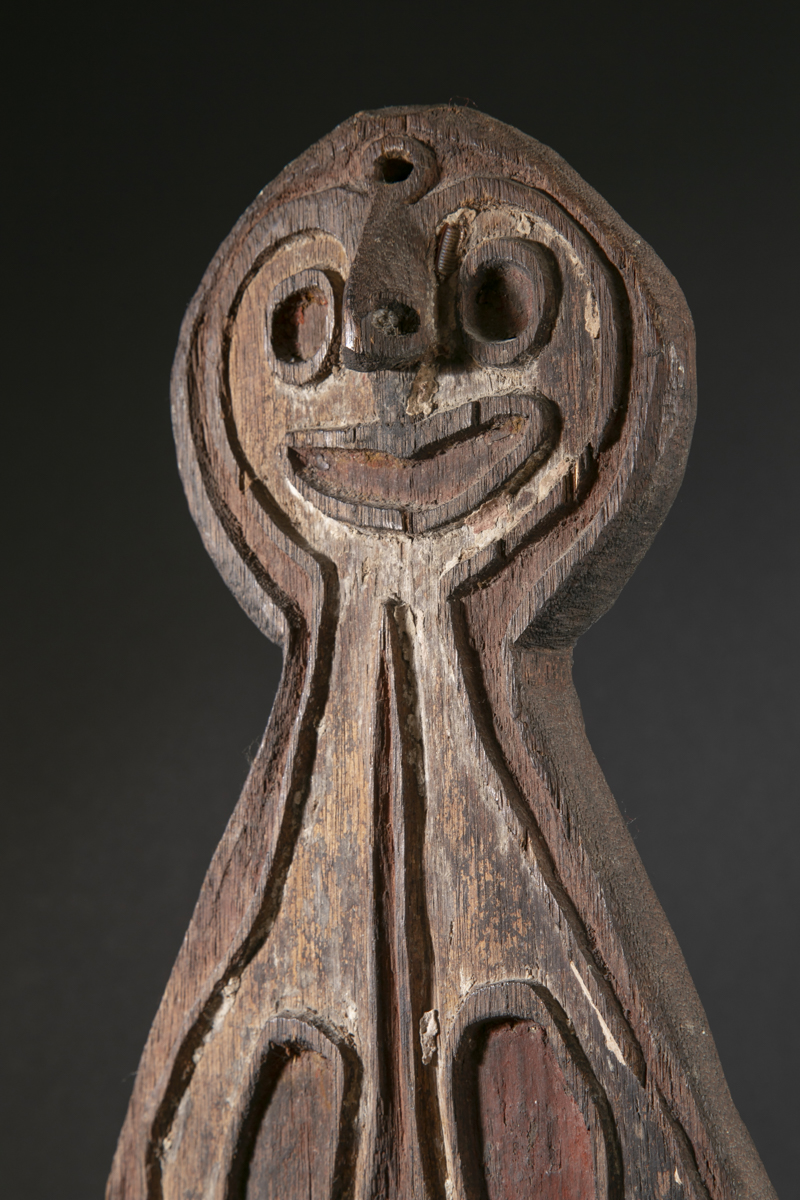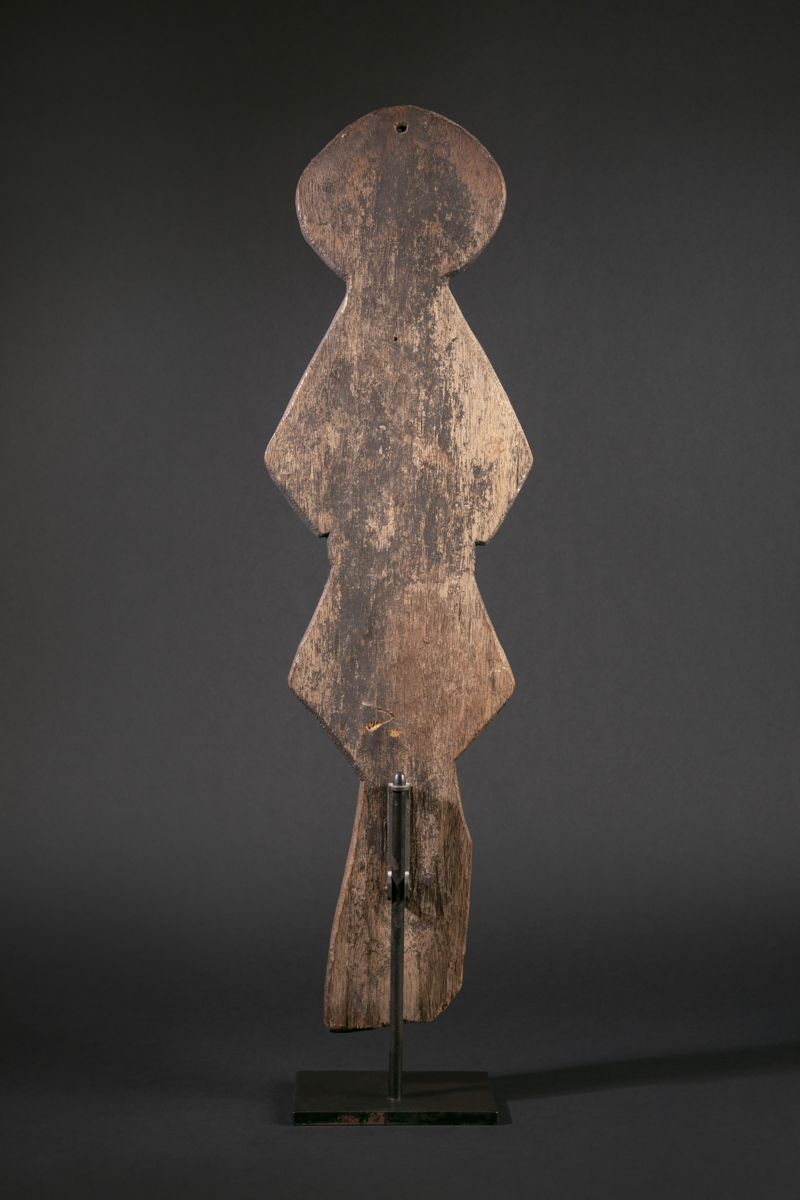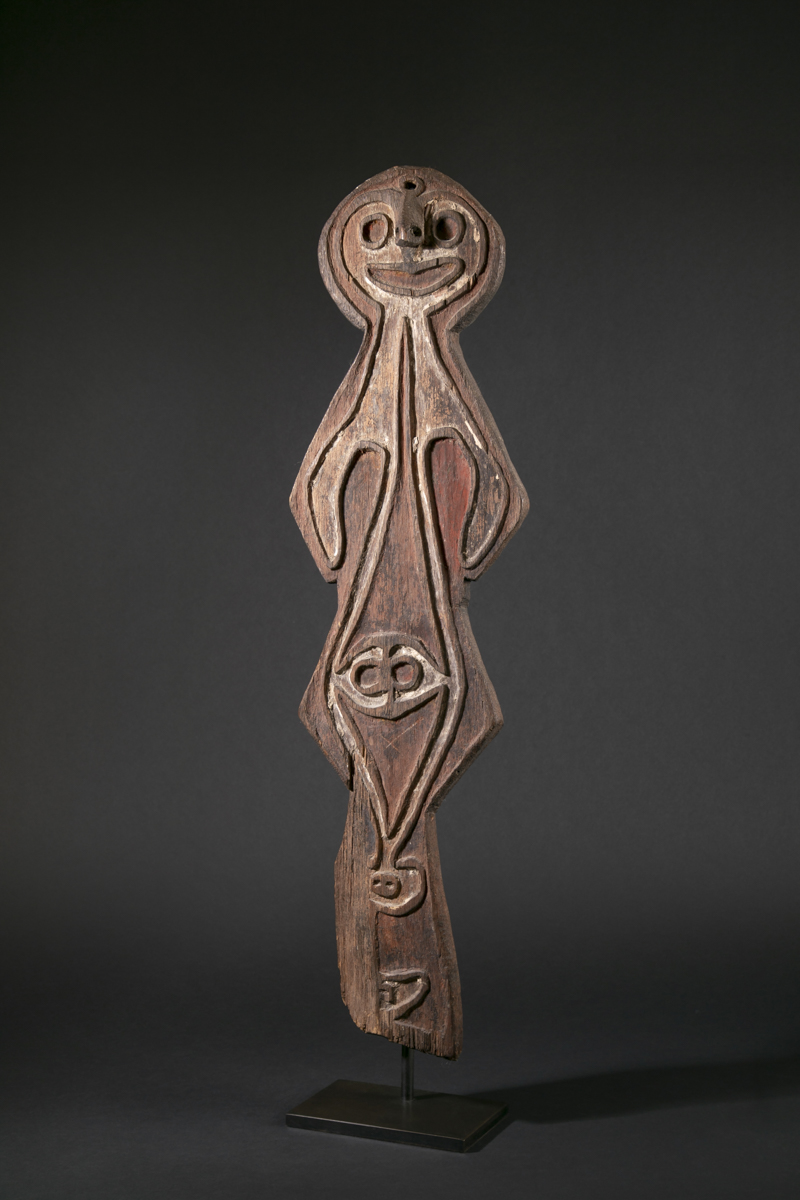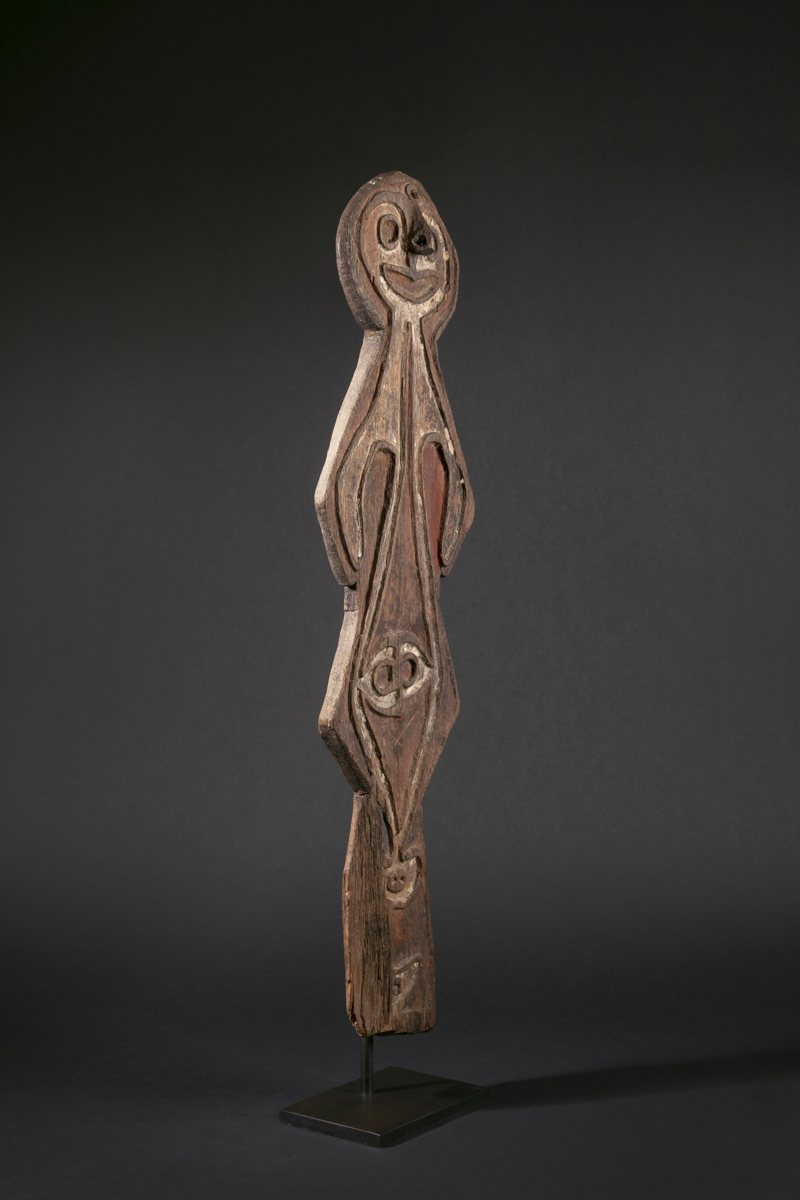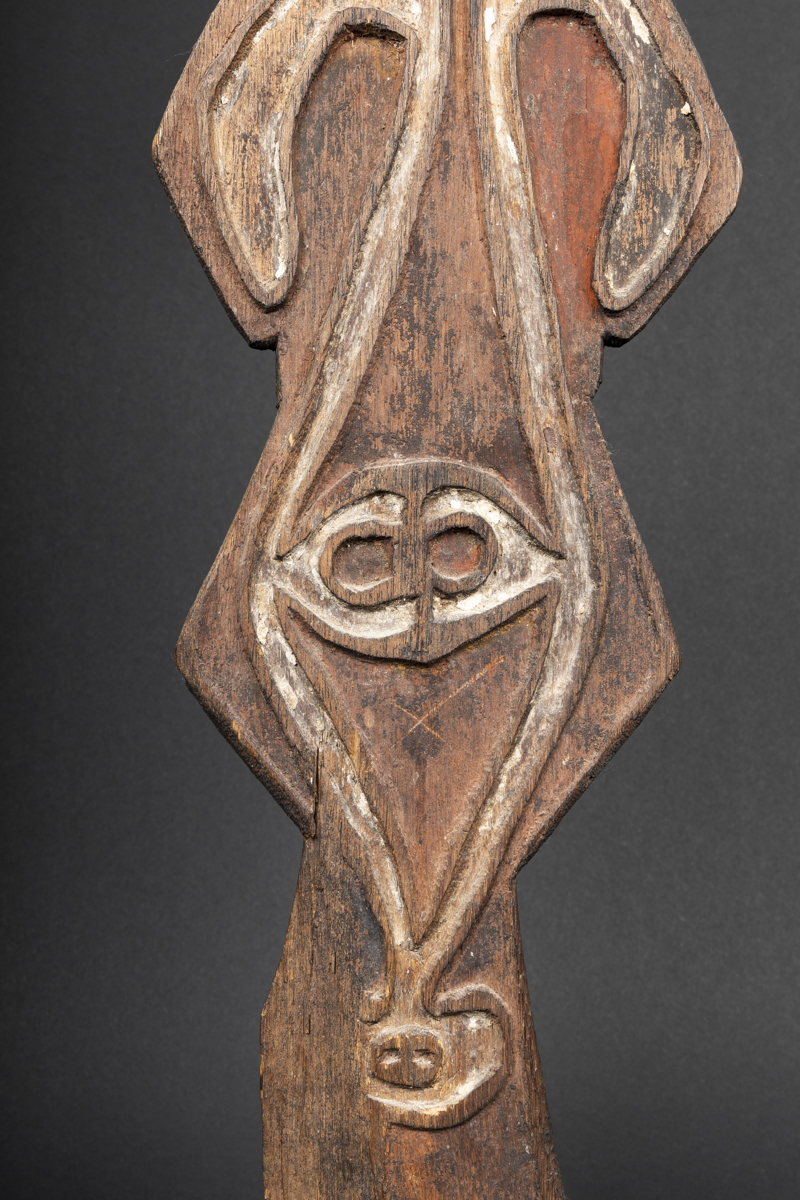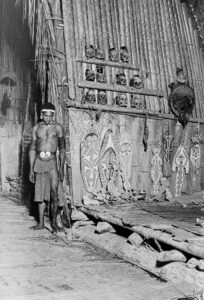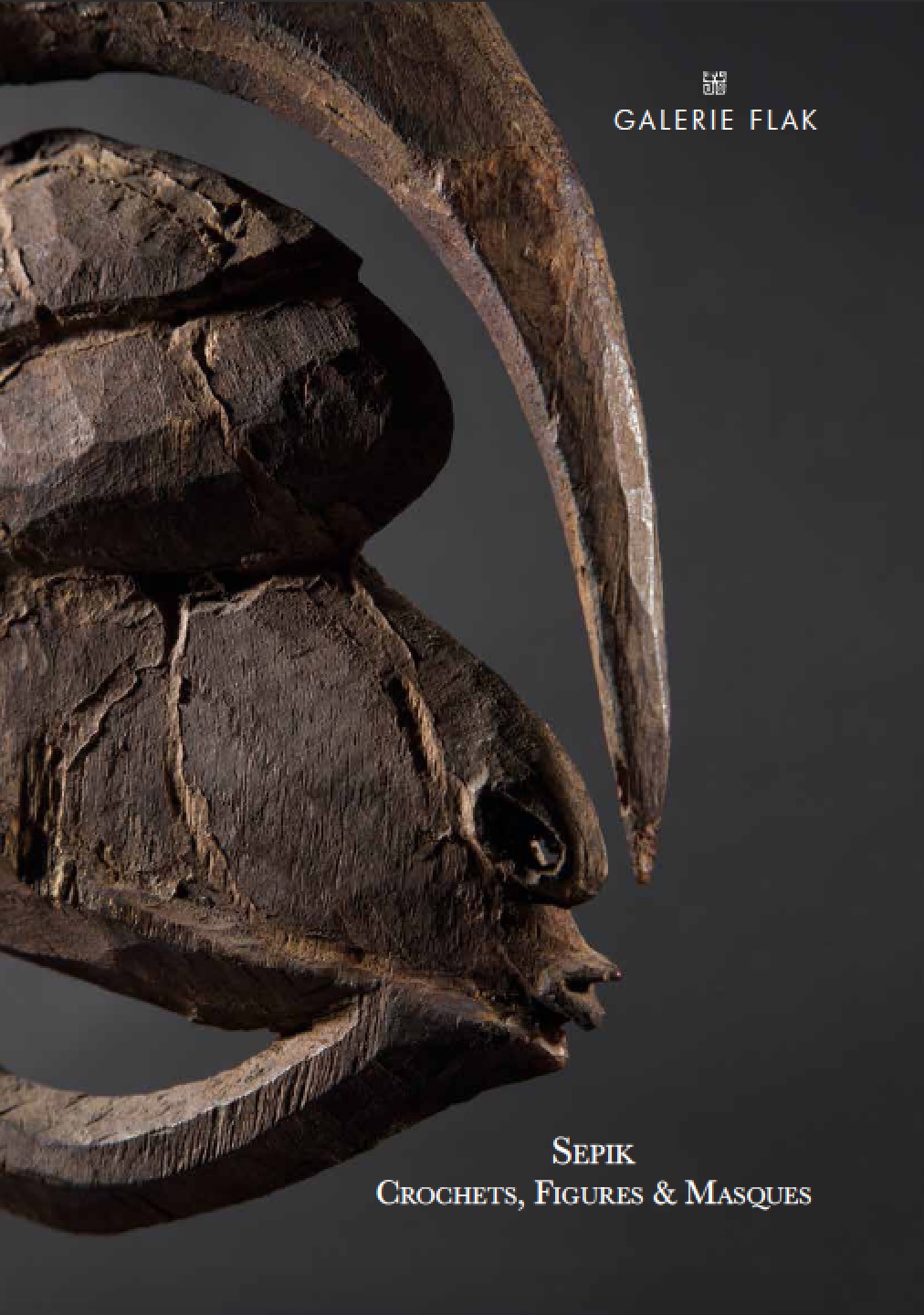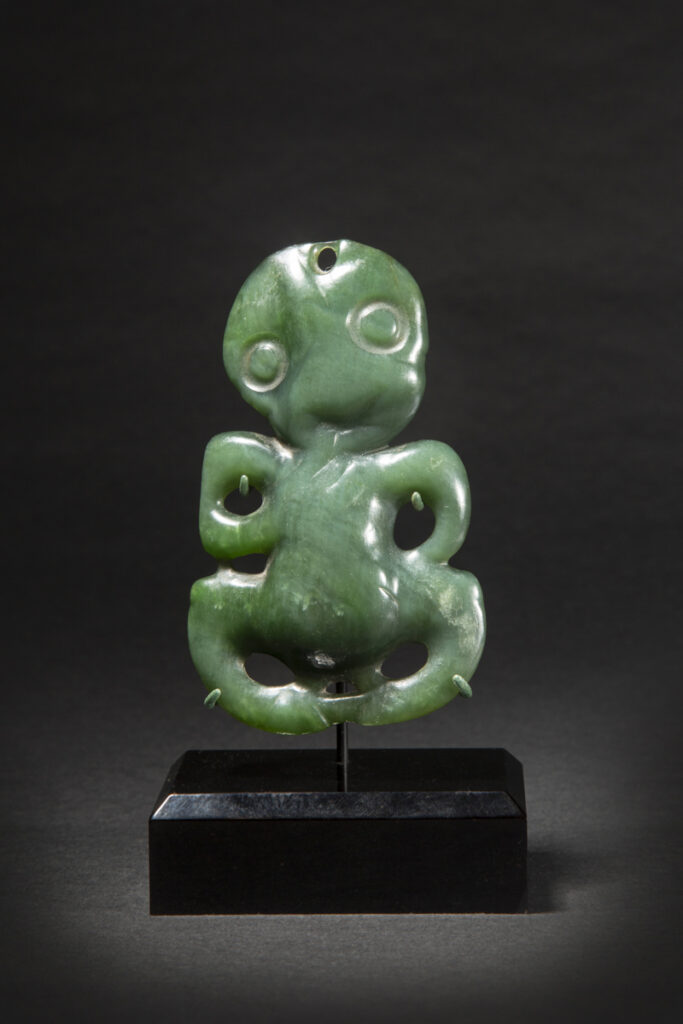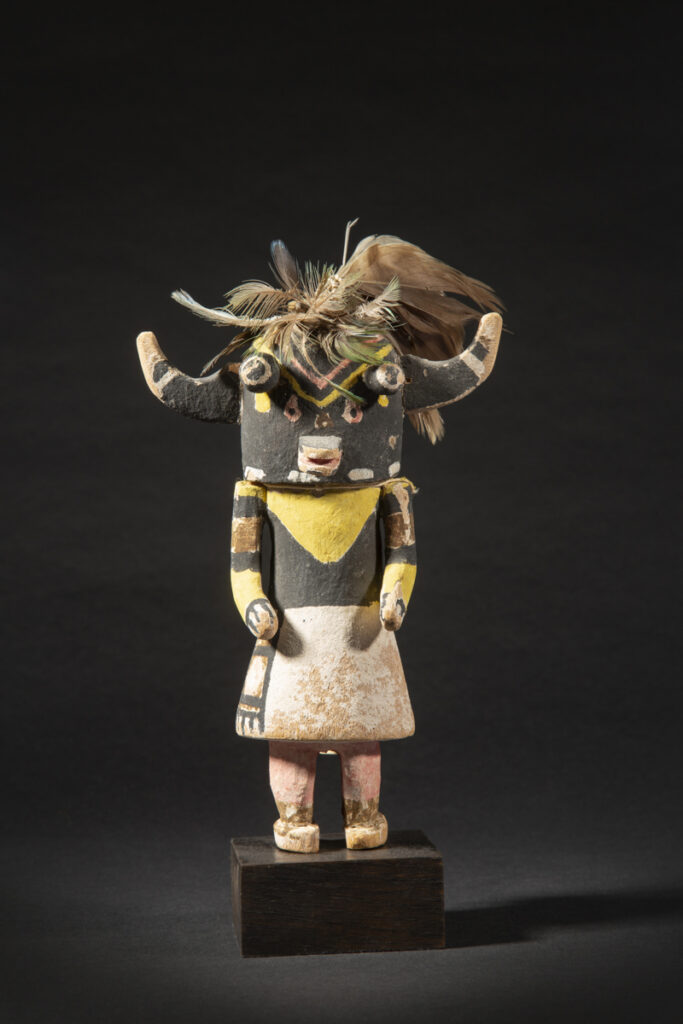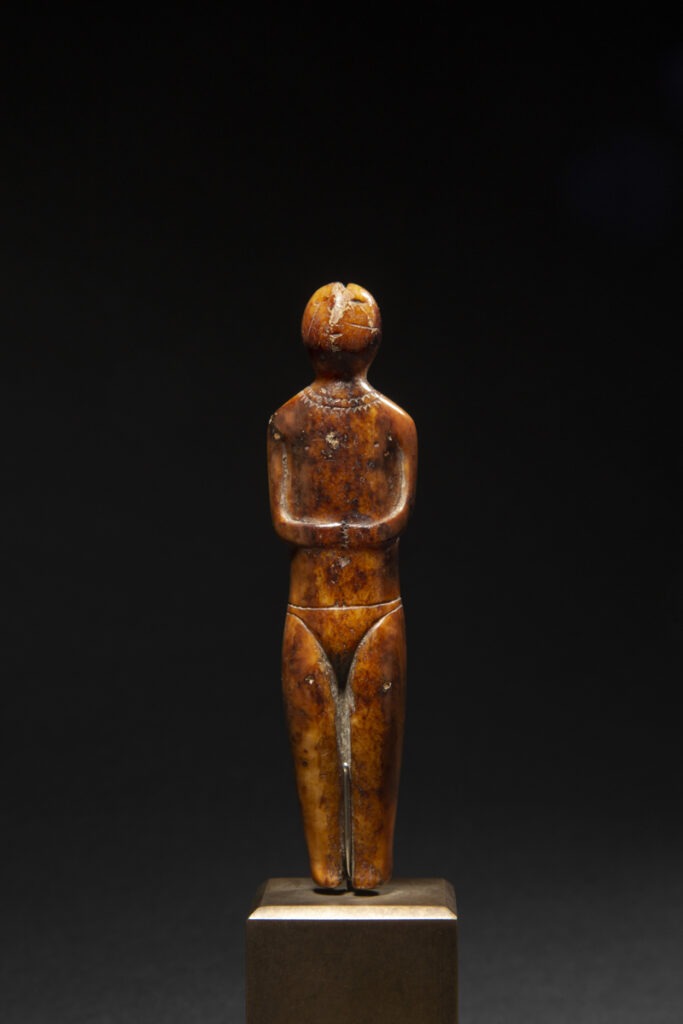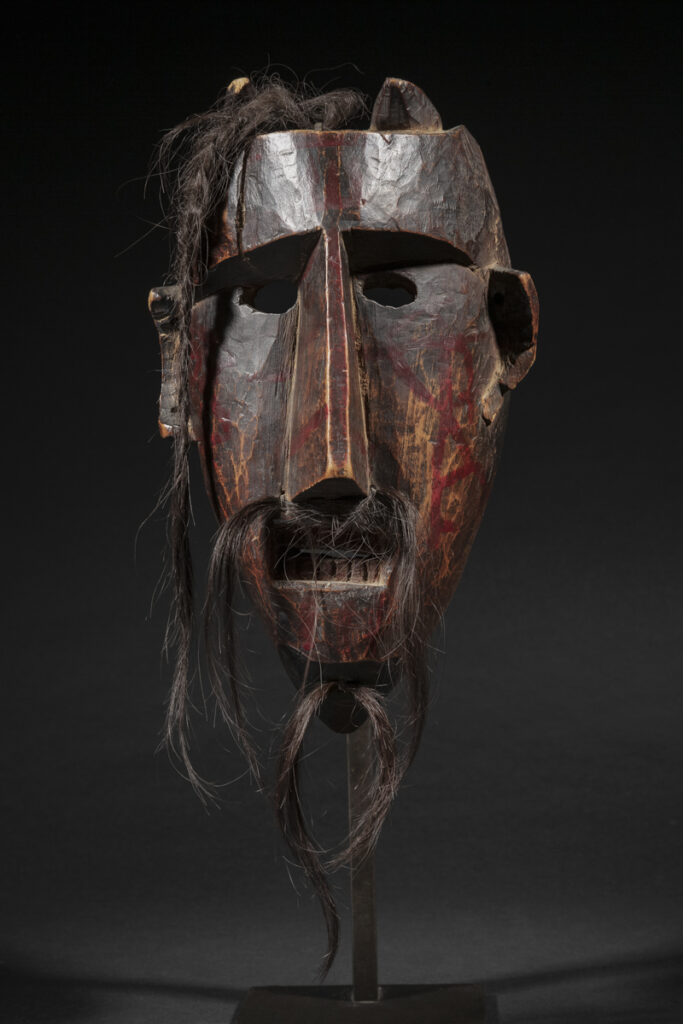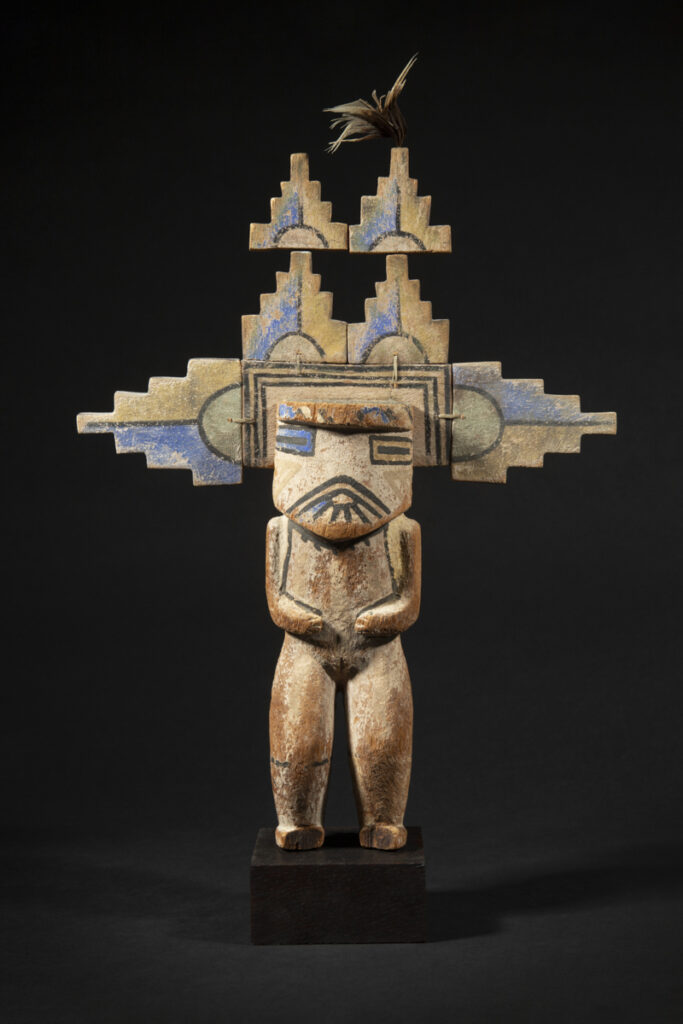oceania | Papua New Guinea
Gope
Papua New Guinea
Gope spirit board or Bioma
Wapo / Era, Papuan Gulf
Early 20th century
Carved wood and pigments
Height: 27 ¼ in. (69 cm)
Provenance
Ex Etude Jutheau auction sale, Paris, 14 Dec. 1990, lot 9
Ex collection Pablo Volta (1926 – 2011), Paris
Exhibited
“Maryan, une peinture vérité”, Galerie Kamel Mennour, Paris, on loan from Galerie Flak, March-May 2022
Bioma Volta 69 cm / Galerie Flak
Price on request
As described in "Coaxing the Spirits to Dance" (Hood / Metropolitan Museum), in the past, the primary focus of religious and artistic life in the region was on powerful spirits (imunu). Each imunu typically was associated with a specific location in the landscape, rivers, or sea, and was linked to the specific clan within whose territory it dwelt. Papuan Gulf wood sculpture was primarily two-dimensional, consisting of board-like carvings, known as spirit boards (Gope or kopé), and figures with designs in low relief. Villages formerly had large communal men's houses divided into cubicles, each allotted to a particular clan or subclan. Every cubicle contained a clan shrine, which housed the Gope spirit boards, figures, human and animal skulls, and other sacred objects associated with the clan's various imunu.
An extremely similar figure appears in a field photograph taken by Frank Hurley in 1921 in the village of Kinomere (Urama) and published in "Embodied Spirits" page 298 as well as on photos by John Vandercook taken in 1933.
An extremely similar figure appears in a field photograph taken by Frank Hurley in 1921 in the village of Kinomere (Urama) and published in "Embodied Spirits" page 298 as well as on photos by John Vandercook taken in 1933.
Photograph by John W. Vandercook
“Unidentified man near a clan shrine”, 1933
The Metropolitan Museum of Art, New York
PSC 1977.2.52
Publication
Explore the entire collection
